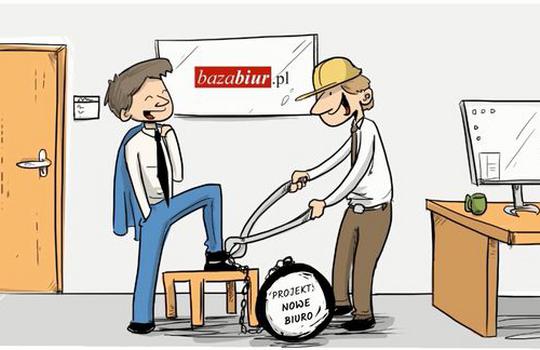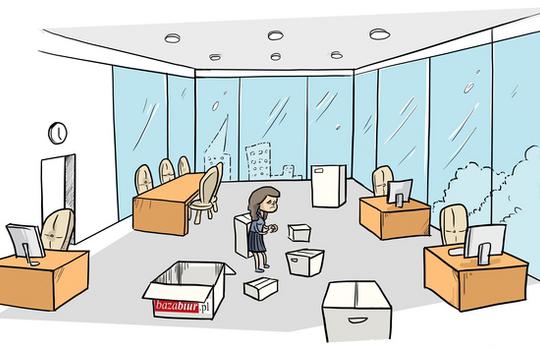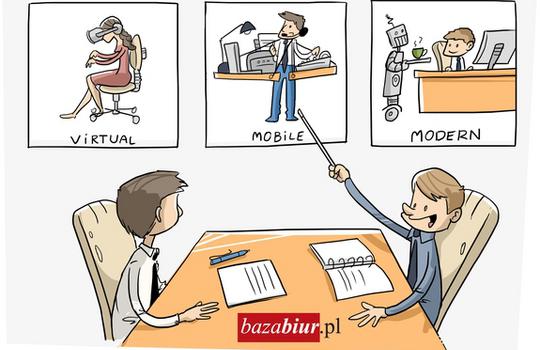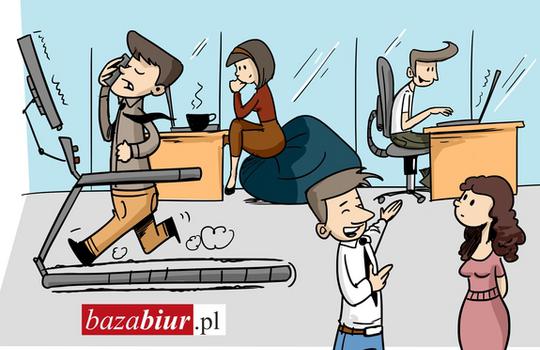Time pressure can have a detrimental effect on the lease process – even the best market conditions will not help us obtain good lease terms if we delay the start of the process for too long. How much time do we need in order to have a good choice and seize the opportunity of office relocation? Let’s have a closer look at the specific phases of this process.
A good plan is essential, so meticulously PLAN
(2 weeks +)
The importance of this phase is quite often underestimated. However, my experience shows that the more time we devote to planning, the swifter and more efficient the whole process of office relocation will be.
It is good a idea to start planning from verifying the company's employment level (both current and future), specifying the required space and the way of arranging it (cabinets vs. open plan, meeting rooms etc). If we want to do a professional workplace analysis (the use of office desks, occupancy of conference rooms, mobility of employees etc) it would be best to conduct it during this phase.
While working on a project’s schedule it is necessary to consider the calendar for public holidays, statutory work-free days, vacations periods as well as procedures that could prolong the whole decision-making process. If we are planning significant changes in the organization of office space, we should also consider whether we need additional time to inform and engage our employees.
During this phase, we should also specify the budget, location and technical requirements as well as review current engagements in order to ascertain potential opportunities and pitfalls. It is good to divide our list of requirements into “must-have” and “nice-to-have” categories. Finally, we appoint the project team, both on the client’s side and the advisor’s. Once this is achieved, we are ready to go to the market and execute our strategy.
Don't miss a thing, undertake OPTION IDENTIFICATION
(ca. 4-8 weeks)
Having determined the goals and requirements, we must next verify the properties available on the market by preparing the so-called long list of options including all buildings that meet the basic criteria. Sometimes this list can be very long (a tenant looking for 1,000 sq m of office space in Warsaw can currently choose from over 100 buildings!) and therefore, help from an experienced agent can be crucial in reducing the list to those buildings that constitute a real alternative for us.
It is always good to inspect the selected and most interesting buildings ourselves. Visiting the building usually takes around 30 minutes. Taking into account the time needed for commuting, viewing only four buildings can take up a large part of the day. Therefore, if we are planning to visit more than six buildings we should do it in phases.
A practical dress code applies as well – our high heels and best suits should be left in our office, especially if our list includes buildings under construction. Our goal is to get to know the investment and its surroundings as well as gather conclusions to help us along the process. A professional advisor will assist us by preparing a tour book – a short guide including a map, the most crucial information about the building and space for making notes.
We choose the building for years, so don't jump to conclusions – ANALYSIS OF AVAILABLE OPTIONS AND NEGOTIATIONS
(ca. 8-12 weeks)
After choosing the most attractive real estate options among those available, we should conduct a thorough analysis. We invite landlords to submit their offers (a good advisor should propose a Request for Proposal template that will simplify “reading” them), prepare initial arrangements and project valuations. Based on obtained information we can accurately compare buildings. Here, the tools used by experienced consultants will again be of a great use – tabular listings, maps, financial models and matrices for “soft” criteria valuation (including communication, surroundings, building certifications, amenities) that are helpful in finding a common denominator for all offers. It is ideal if we can call on a technical expert’s support at this phase. The expert will compare for us the technical standards, fit-out packages on offer and budgets dedicated to this goal.
An extremely crucial element is the conducting of a financial analysis regarding the real (verified by a test fit) lease area and all projected operational costs. Furthermore, we should not forget about the year-on-year rebt indexation and potential increases in service charges during the lease period.
As for our preferred choices, we present them counteroffers, send them more detailed questions or invite them to our meetings in order to negotiate the best possible (not only financial) terms. To secure our favourite option before proceeding to lease contract negotiations, a Letter of Intent, summarizing the so-far agreed terms, can be signed.
More haste, less speed – TRANSACTION FINALIZATION
(min. 8 weeks)
After signing the Letter of Intent, we sit down to negotiate the lease agreement’s content. The agreement’s template is prepared by the landlord. While it can happen that such negotiations are finalized in one day in case of emergency, I would definitely recommend reserving at least two months for this phase of the process. The more rights we want our lease to guarantee us, the more time we need to secure satisfying solutions.
At this phase, the agent’s task is to cooperate with the Client’s attorney, help in negotiating the agreement’s content, advise on market practice as well as ensure that the previous arrengements will be reflected in the final contract. Alongside the negotiations, we also work on final space plans and technical specifications of the leased space that should be attached to our agreement.
After the agreement is signed by both parties, we must also fulfill other requirements, such as providing acollateral (eg. security deposit or bank guarantee) or insurance.
The Devil is in the detail – FIT-OUT WORKS
(12-24 weeks)
This is the time to adapt the office space in accordance with our needs. If, as usually happens, the landlord is responsible for the arrangement, it is well worth considering hiring a professional technical advisor – a Project Manager – who will inspect the work's progress on our behalf. This will ensure us that the office will be prepared and delivered on time in accordance with the agreed technical specification. We should remember that if the lease agreement in our previous office is due to expire, any delays in preparing new premises might result in financial penalties.
Time is money
It is worth considering the future of our office well in advance. Even if we don’t decided to relocate, market verification might help us in renegotiations, provided that we conduct them in the right time.
In the case of larger tenants it is advised to start the process 18-24 months before the planned relocation. However, even companies requiring smaller space should reserve at least 12 months in order to conduct the project thoroughly and comfortably. If we are interested in built-to-suit options we should approach them at least two-and-a-half to three years in advance.
Relocation to an office that has no inner doors definitely encourages staff integration, however it is much more pleasant to organize a trip for the team instead, so that we can enjoy our new, attractive and fully arranged office space after we get back!












